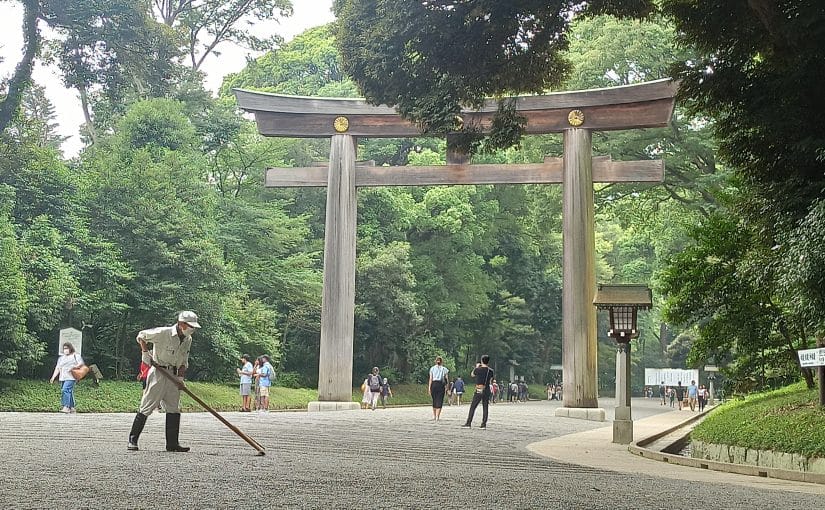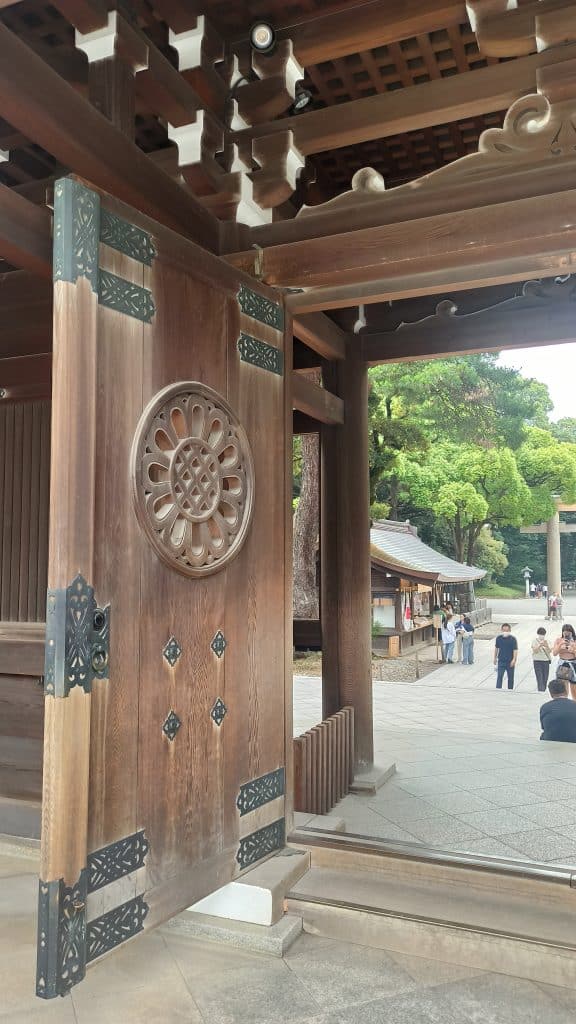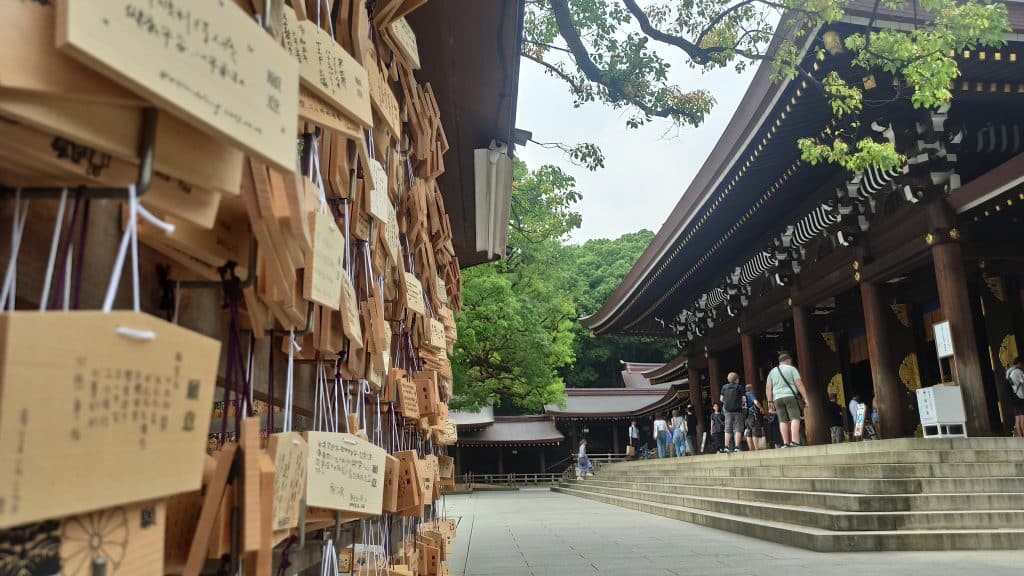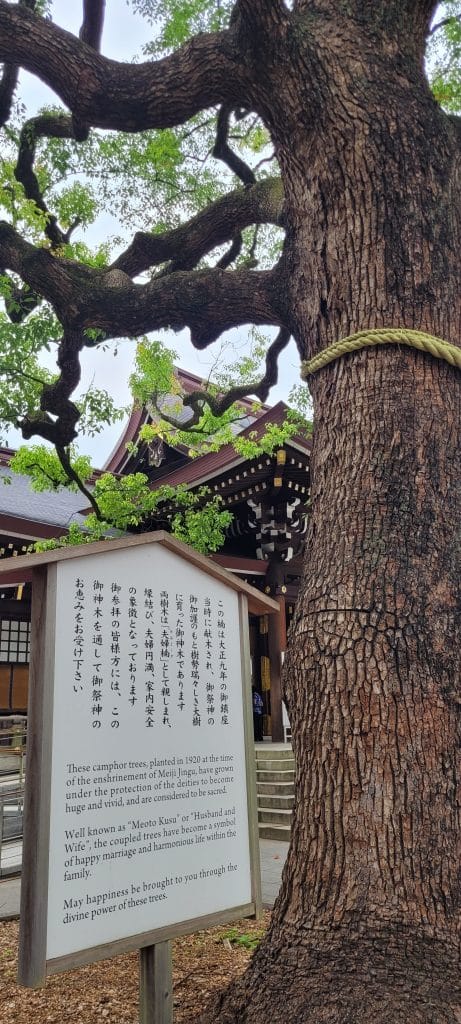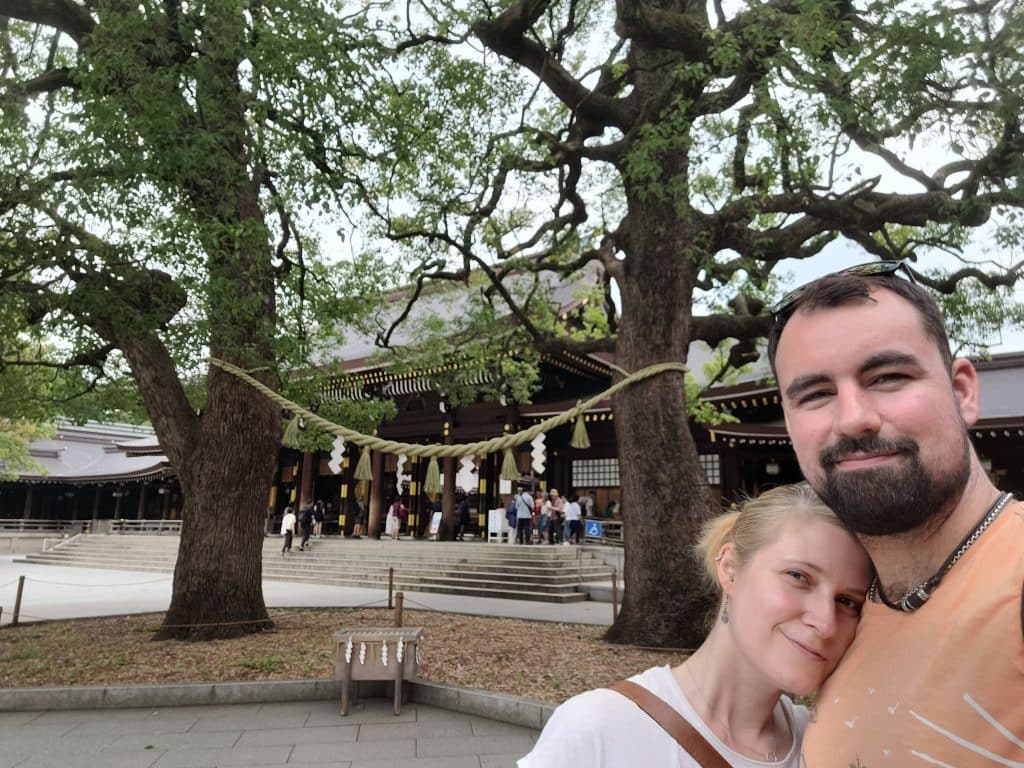Well we tried…
Getting into Tokyo centre, we walked underground (which is why you dont see anyone on the streets in some places) towards the Imperial Palace. We crossed a huge, now largely decorative, moat into the outer park where there must have been thousands of short trees with perfectly smooth cut grass all around. Arriving at the gates, we had thought we could just walk around the formal gardens but apparently you either need to book in advance using a complicated form in Japanese, or line up in the morning and hope you get a spot on a tour, of which there were none left.
Damn it.
But we did get to see some rather skittish horses practicing their carriage parade.
We did neither so we decided to go to another park nearer the attractions we would be visiting later. This was the Meiji Jingu Temple and Garden. It was located in a forrested area so was much quieter, away from the traffic, and less people. It used to be a lords private gardens but was opened up to the public by Emperor Meji decree as he wanted the public to have access like in the West. This was just one part of the changes he brought about in line with his 1868 Charter Oath in Five Articles made to the deity’s and spirits of Japans ancestors. It was a hugely transformative instruction and has shaped the way Japan has evolved ever since.

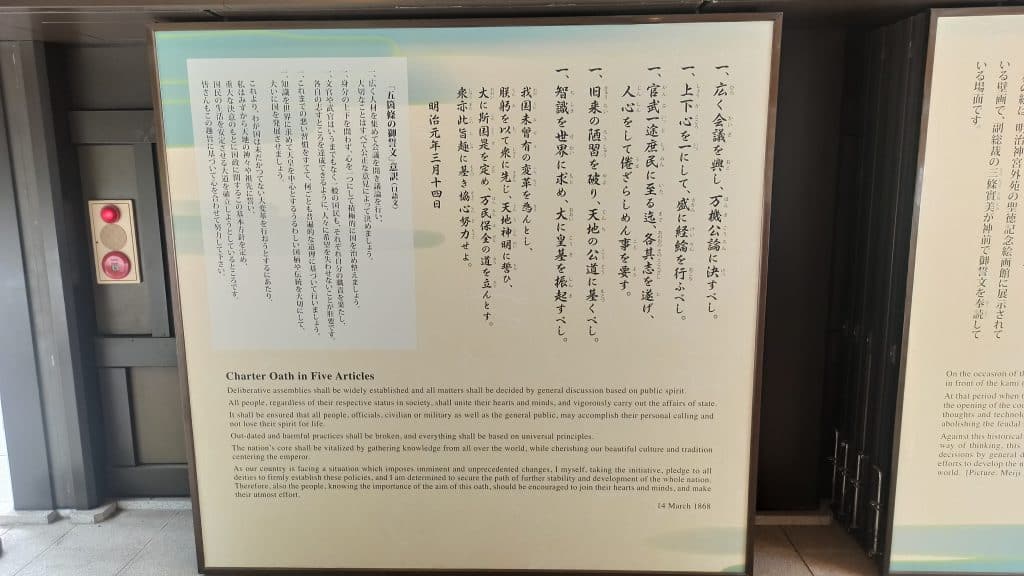
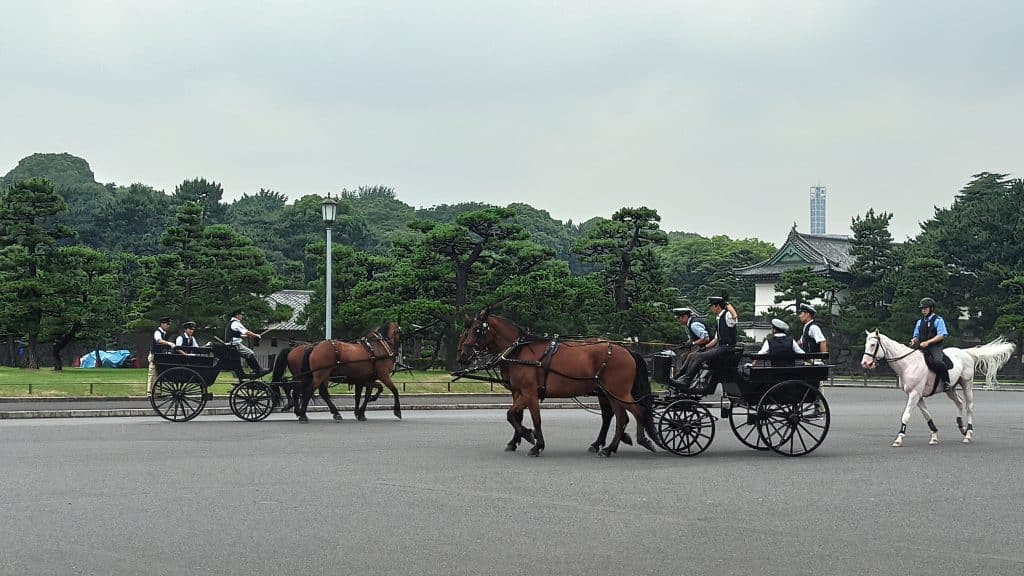
The best bits of this park was the tea house, that overlooks a wonderful lawned hill down to a beautiful lilly pond. In here were lots of big carp, but mostly grey this time. We then spent some time walkong along the banks of the Iris fields. Unfortunately we missed the Iris bloom by about a month. During the time of the Samurai, these fields were used as training paddys to teach children how to farm them. The water comes down the shallow hill from a spring that has been flowing for thousands of years. This was a really beautiful and wholesome spot. You could see the water rising to the surface, cool and perfectly clear.

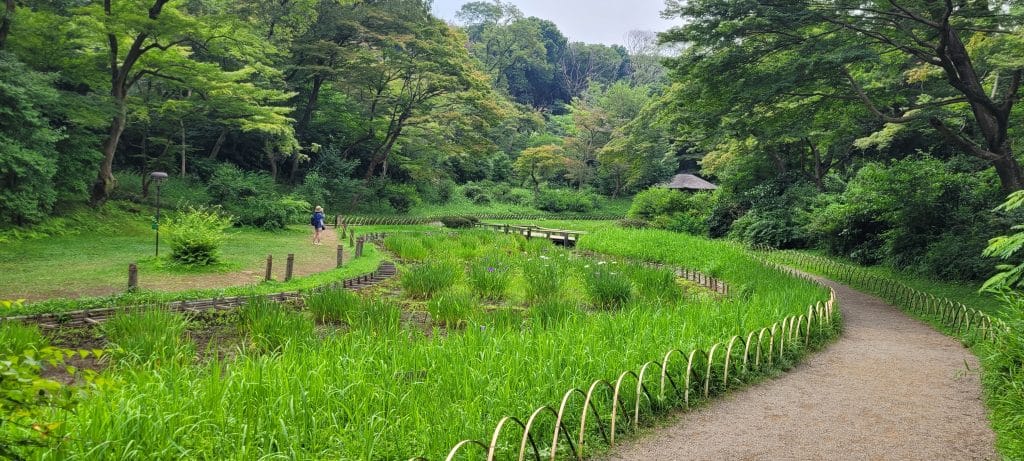

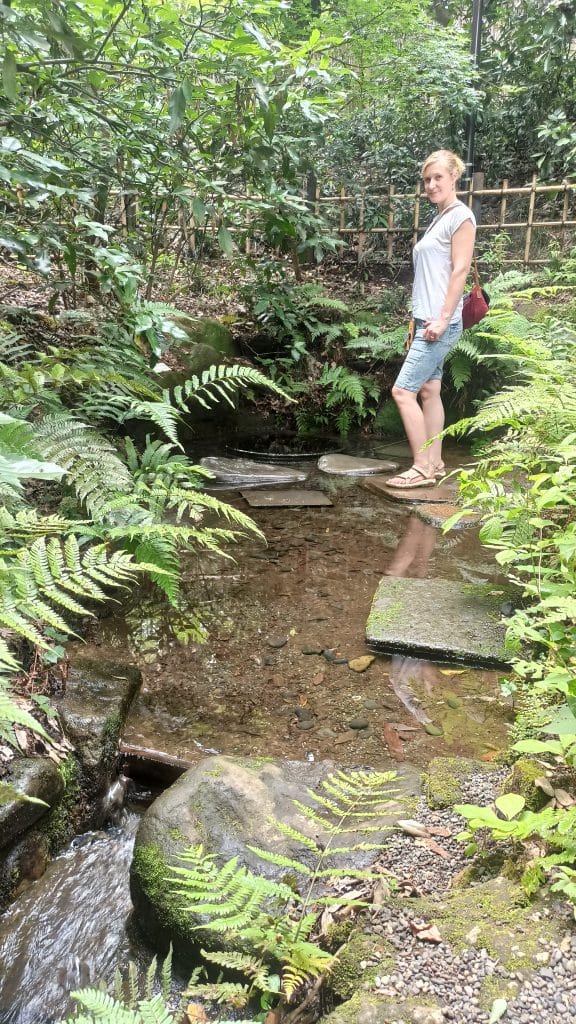

On the way to the Temple we found sake barrels offered by businesses to the gods as a sign of respect. There were also wine barrels from France, as the Emporer had adopted drinking wine with meals. This tradition continues today as a sign of international cooperation. There were also several giant Tori gates. These were far mor satisfyingly made from whole trees, not concrete and steel. Its not quite a Zen garden but a caretaker was raking the stones here and was being so careful and caring to do a neat job, typical of their work ethic.
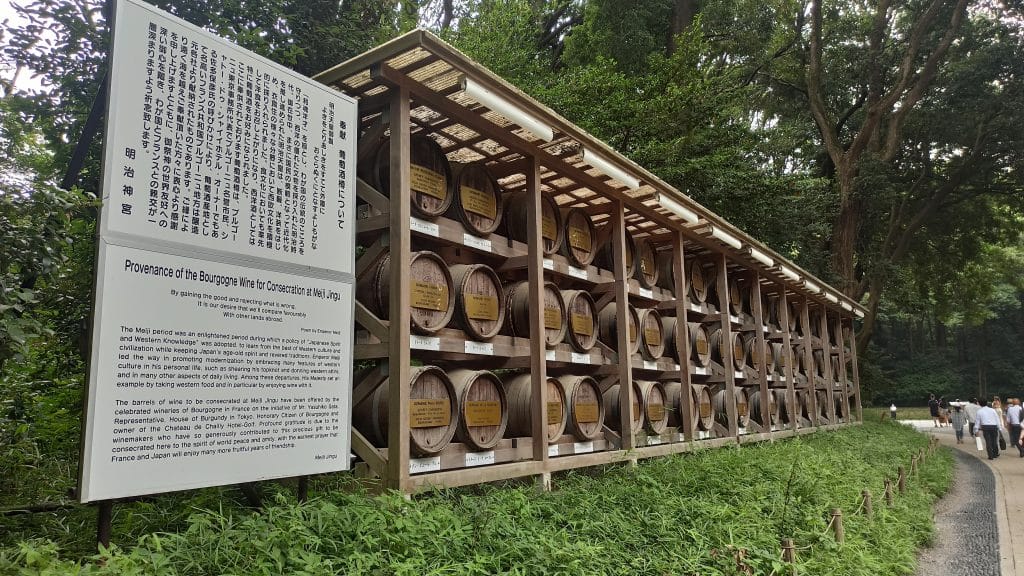



The Meji Jingu temple itself was beautiful. There was an outer gate leading to a big square couryard and then wide steps leading up to another gate into the temple proper. This was were the public had to stop, but lots of people were bowing and clapping twice making their prayers. There are 2 trees in the courtyard planted in 1920, known as “Meoto Kuso” or the “Husband and Wife” trees. We made an offering here in the hope the spirits will grant us a “happy and harmonious married life”.
We had a lovely meal in the parks restaurant and then in pursuit of a harmonious life, Aimi left to go back to the studio for a sleep. It was a good few hours before our next activity and I wanted to meet up with the Wednesday Tokyo Whoopers group. Luckily they were holding their meeting on a Tuesday this week so I could attend. Aimi, very supportively, left me to it.
I found the place tucked away in a very expensive part of Tokyo. There were fancy fashion shops everywhere and also a lot of bridal stuff. Walking around the area I was shocked to find myself outside what looked like an English cathedral! It was a beautiful recreation that gets used for weddings.

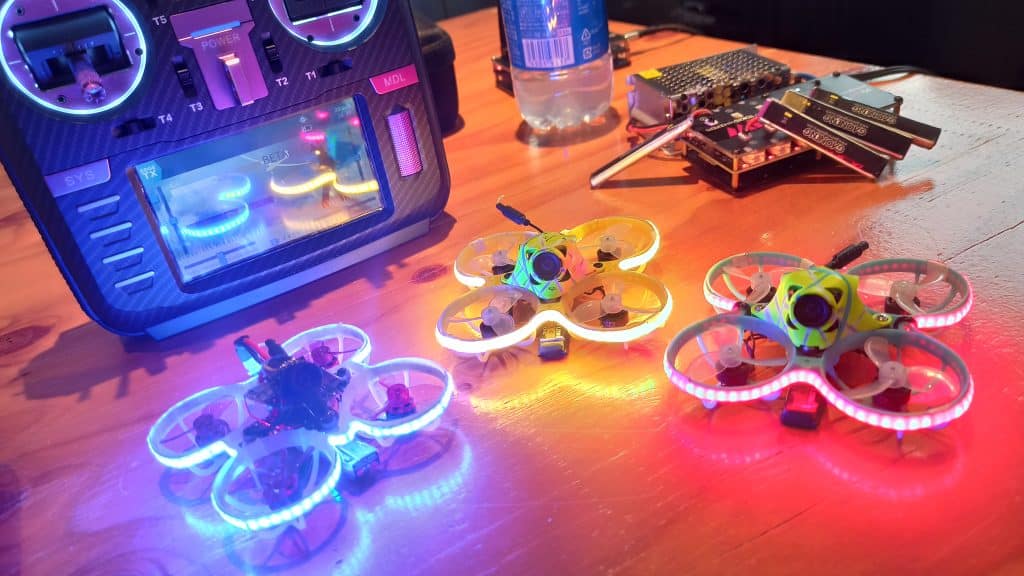

Mai, the organiser of WTW, was really welcoming. Shes got a great group of guys and finds spots all over the city to fly. I would have loved to bring my whoop but there is just so much gear that goes along with it, that it would be a whole other bag to cart around. Instead, I enjoed helping set up the track and had some fun watching the guys fly. They very kindly showed me the modified COB LEDs they surround their whoops with and then presented me with some! It looks AWESOME so I’m very excited to put them on my Whoop!
Meeting up with Aimi went surprisingly smoothly and we head up to Shibuya Sky. This is the tallest building in the area, on top of which is an astroturf covered helipad used as a viewing platform. From here we could see the Tokyo tower and SkyTree and a huge black lack of lights forming the park we visited earlier in amongst all the towers and illuminated bill boards. You can also see the famous Shibuya crossing where hundreds of people wait paitiently for the lights, and then flood across the intersection in all directions. We joined a queue to access the corner of the roof for this view when I started to feel really dodgy.

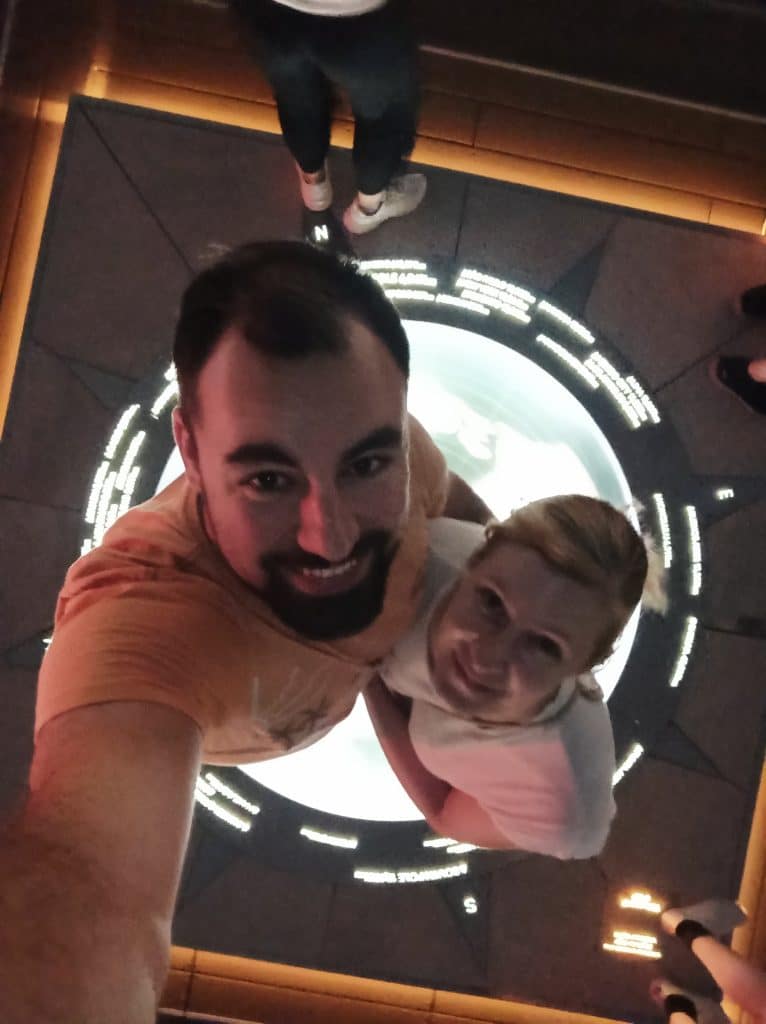
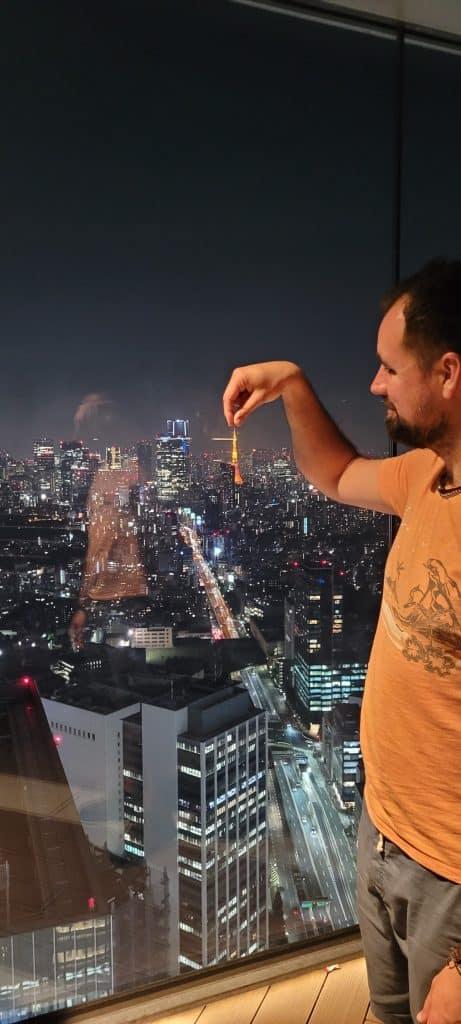
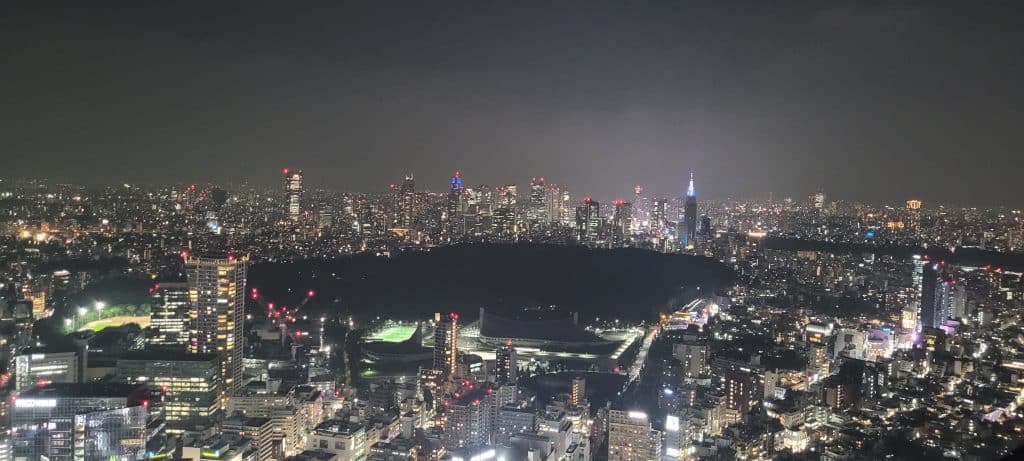

Waiting to go and meet Mai, I’d sat in a coffee shop, and because I didn’t know what Aimi would want to do for dinner, I only had a tapas plate of garlic prawns and bread. It was very small rattling around in my empty belly. Then I’d only had water or green tea for the last couple hours. The reason my belly was empty is that just before we left the Imperial Palace, I used a public restroom. Having been chemically bunged up for 3 full days now, it took some doing, but I finally pooped and basically cleared myself out empty.


On top of that view point, I was trying to enjoy the city scape and get nice photos. It could have been really romantic, but I felt like shit. To the point we had to leave that queue line and go and find a toilet. It was not fun. I emerged after long enough that there was genuine concern on Aimi’s face. I needed some time sitting and sipping some water before we went back up on the roof. Got some photos, took a look around and left. I was feeling delicate, getting better but wanted to go home.

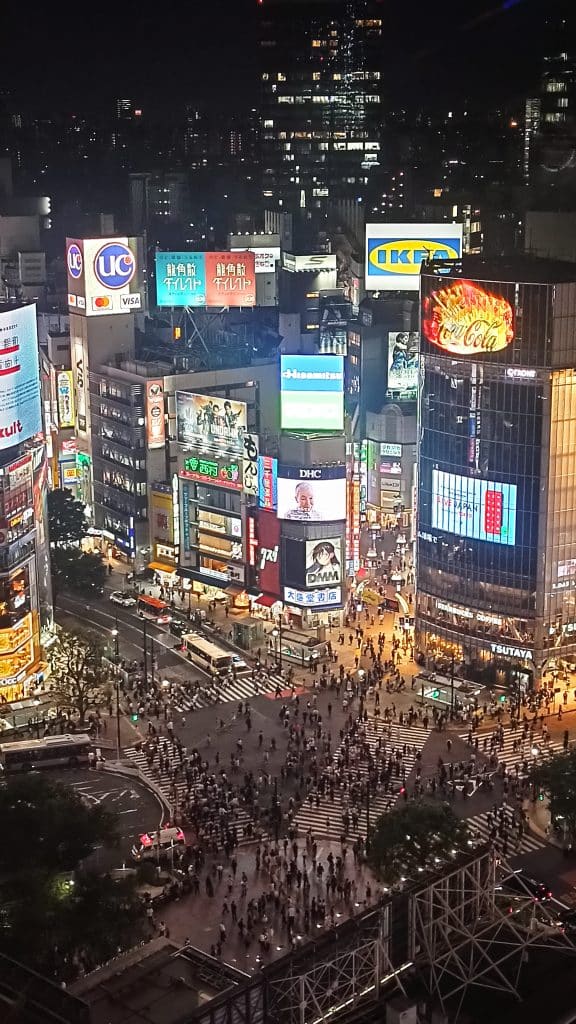
We couldn’t leave without crossing the famous crossing where basically everyone has their phones out taking photos of the other people who have their phones out taking photos of the crossing… And then we saw a statue of Hachiko. He was a real dog who lived in Tokyo in the early 1900s. After his owner passed away, he continued to wait for him at a train station everyday. Hachiko became famous for his loyalty and devotion and we like him because he’s an Akita like Haku.

